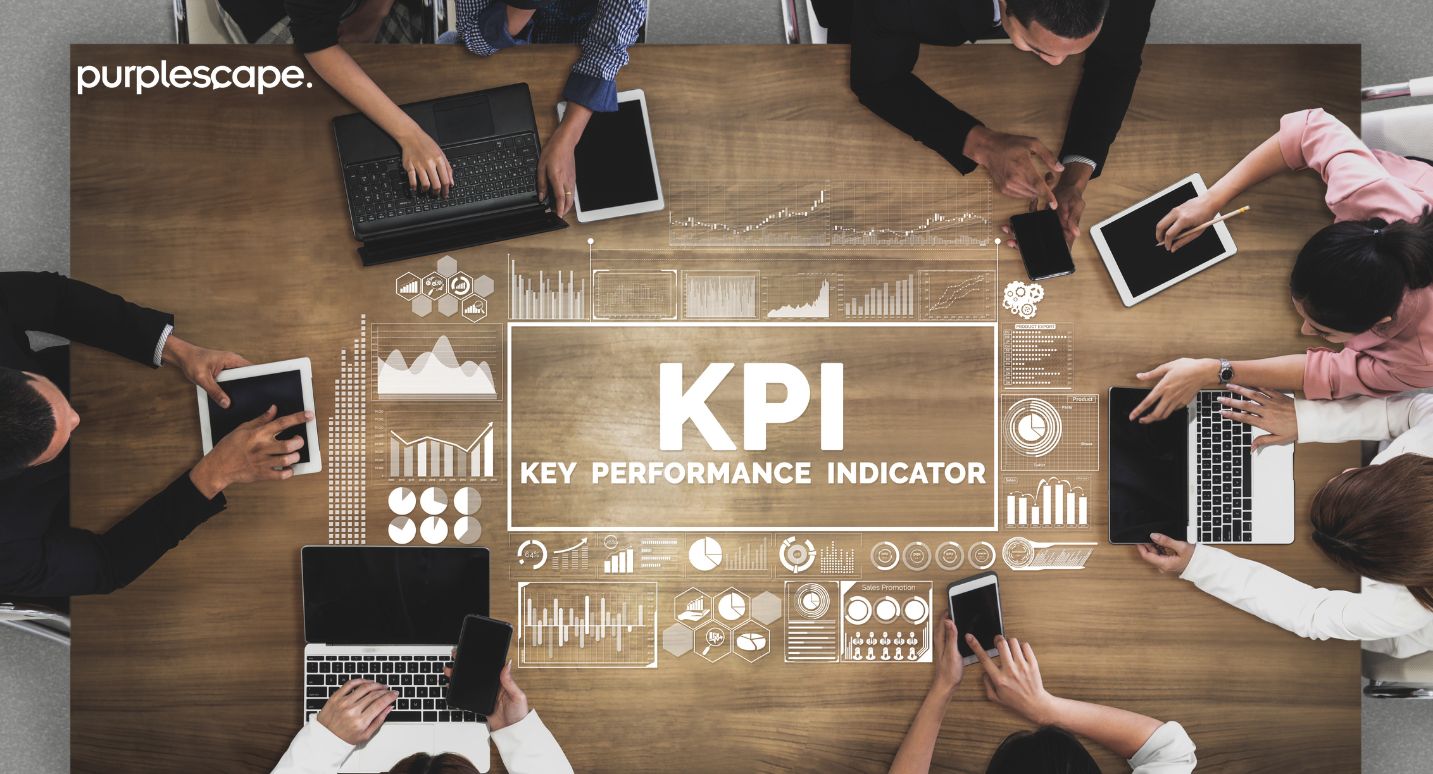
Introduction
Companies that leverage data effectively for their sales strategy outperform their competitors and are more likely to acquire customers as well as retain them. However, having data isn’t enough—it’s about how sales teams use it to track their Key Performance Indicators (KPIs) to improve decision-making and achieve better deal wins.
Sales KPIs are metrics that allow businesses to track the performance of their sales teams and processes. From measuring lead conversion rates to understanding the length of the sales cycle, these metrics serve as a compass for your sales strategy. Without KPIs, businesses are essentially flying blind. Conversational BI lets users track key sales KPIs with natural language queries.
In this blog, we’ll explore how conversational BI revolutionizes KPI tracking, its advantages for sales teams, how to maximize its benefits, and strategies for overcoming common challenges. If you’re looking to drive better deal wins through smarter sales processes, read on to learn how Conversational BI simplifies sales KPI tracking.
Understanding Sales KPIs
Sales KPIs are quantitative measures used to assess the effectiveness of a company’s sales efforts. These metrics help sales teams understand where they excel and where improvement is needed. Here are some common sales KPIs:
- Lead Conversion Rate: This metric measures the percentage of leads that are converted into actual sales, indicating the effectiveness of the sales process.
- Average Deal Size: The average deal size represents the mean revenue generated from each closed sale, helping businesses understand their sales potential and revenue forecasting.
- Sales Cycle Length: This KPI tracks the average duration it takes to close a deal from the initial contact to final sale, reflecting the efficiency of the sales process.
- Customer Acquisition Cost (CAC): CAC measures the total cost associated with acquiring a new customer, including marketing expenses and sales team resources, helping businesses evaluate their investment effectiveness in acquiring customers.
- Sales Growth Rate: This metric shows the percentage increase in sales over a specific period, indicating the overall health and performance of the sales team.
- Churn Rate: Churn rate measures the percentage of customers who stop using a company’s product or service over a specific timeframe, highlighting customer retention effectiveness.
- Customer Lifetime Value (CLV): CLV estimates the total revenue a business can expect from a single customer account throughout their relationship, helping assess long-term profitability.
- Sales Target Achievement Rate: This KPI measures the percentage of sales targets met or exceeded by the sales team, showcasing performance relative to set goals.
- Lead Response Time: This metric tracks the average time it takes for sales reps to respond to incoming leads, influencing conversion rates and overall sales effectiveness.
- Sales per Rep: This KPI measures the total revenue generated by each sales representative, helping evaluate individual performance and productivity within the sales team.
KPIs are essential for crafting a successful sales strategy. They offer insights into what’s working and what isn’t, helping businesses allocate resources effectively. Without KPIs, it becomes impossible to determine the success of a sales campaign or make data-driven decisions. Sales KPIs also serve as benchmarks for goal setting. Whether aiming for a 20% increase in lead conversion or reducing the sales cycle by 15%, setting measurable goals tied to KPIs helps keep teams accountable.
Conversational BI: Revolutionizing KPI Tracking
Tracking sales KPIs is critical for evaluating performance, but traditional systems often hinder quick access to actionable insights. Conversational BI transforms KPI tracking by allowing sales teams to instantly interact with their data in a more intuitive way. Rather than manually navigating through dashboards or waiting for reports, conversational BI enables users to query KPIs like Lead Conversion Rate, Average Deal Size, and Sales Cycle Length in real time using natural language. This shift not only streamlines the process but also provides deeper, faster insights that empower teams to adjust their strategies on the fly and improve deal outcomes.
User-Friendly Data Interaction
Conversational BI democratizes data access by allowing users to interact with complex datasets using simple language. Instead of relying on data analysts to generate reports, sales reps can ask, “What was our lead conversion rate last month?” and get instant results, making data more accessible.
Real-Time Analytics and Reporting
Traditional BI tools often present data with a delay, making it difficult for sales teams to act in real-time. Conversational BI, on the other hand, provides real-time analytics and reporting. Sales teams can adjust strategies on the fly, optimizing their approach based on current data.
Integrating Conversational BI with Existing Tools
Conversational BI can easily integrate with your existing CRM and sales tools, making it a seamless addition to your tech stack. This integration ensures that sales teams can pull data from multiple sources and receive a unified view of their KPIs.
Enhancing User Experience with Conversational BI
Salespeople are often too busy to spend hours learning new tools. Conversational BI enhances user experience by simplifying the process. The intuitive, chat-based interface means sales teams can get the insights they need without having to learn complicated dashboards.
Advantages of Using Conversational BI for Sales KPIs
By simplifying how sales teams interact with data, conversational BI empowers sales professionals to stay on top of key metrics like Customer Acquisition Cost, Sales Growth Rate, and Churn Rate without needing advanced technical skills. This real-time interaction with data not only boosts agility but also enhances accuracy, allowing sales teams to spot trends, adjust tactics, and make informed decisions more efficiently. Let’s explore the key benefits that conversational BI brings to tracking and optimizing sales KPIs.
Empowering Sales Teams
When sales teams can access data and insights independently, they become more empowered to make decisions. This autonomy not only improves efficiency but also leads to greater accountability for performance.
Streamlining Sales Processes
With conversational BI, sales teams can streamline their processes by reducing the time spent on data analysis. Instead of manually pulling reports, they can access real-time insights instantly, allowing them to focus more on selling and less on administrative tasks.
Enhanced Collaboration Across Teams
Conversational BI enables cross-functional collaboration by making data accessible to everyone. Sales, marketing, and customer service teams can all interact with the same data, leading to more coordinated efforts and a better overall customer experience.
Facilitating Data-Driven Decision Making
Data-driven decisions are crucial in today’s competitive landscape. Conversational BI equips sales teams with the insights they need to make informed choices, from identifying high-value prospects to adjusting sales pitches based on real-time data.
Improving Customer Engagement and Relationships
By providing deeper insights into customer behavior and preferences, conversational BI allows sales teams to personalize their outreach. Personalized interactions lead to stronger customer relationships and, ultimately, better deal wins.
Future of Sales KPIs with Conversational BI
As conversational BI evolves, we’re likely to see new features like predictive analytics, deeper AI integration, and more advanced customization options for sales teams. Conversational BI will play a pivotal role in the future of sales performance management. With its ability to provide real-time insights, it will help sales teams meet ever-increasing performance expectations.
Personalization will continue to be a key differentiator in sales, and conversational BI will enable even greater personalization by providing deeper insights into customer preferences and behaviors. The role of sales teams will evolve as they rely more on data-driven insights to make decisions. Instead of gut-feeling decisions, data will become the foundation of every sales interaction.
In the long term, conversational BI will significantly impact sales success by making teams more agile, data-driven, and customer-focused.
Conclusion
Tracking sales KPIs with conversational BI can transform your sales processes by providing real-time insights, improving decision-making, and empowering teams to act on data. By providing real-time, accessible insights into key KPIs, conversational BI empowers sales teams to make more informed decisions and adapt quickly to changes in the market. This approach streamlines processes, boosts efficiency, and enhances overall sales performance. If your sales team is ready to take the next step toward data-driven success, it’s time to implement conversational BI and revolutionize your approach to sales KPIs.




